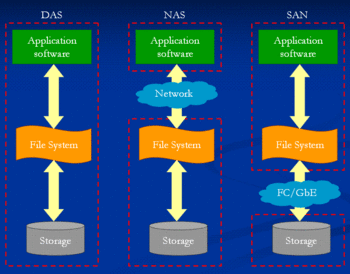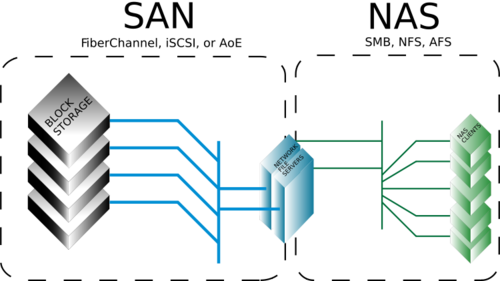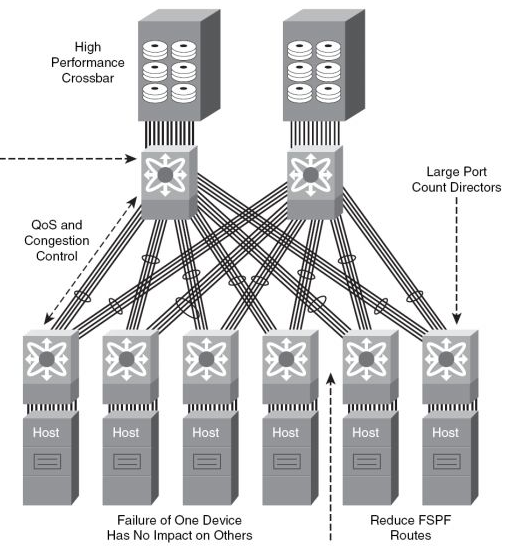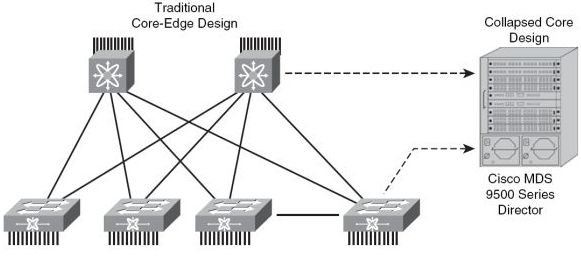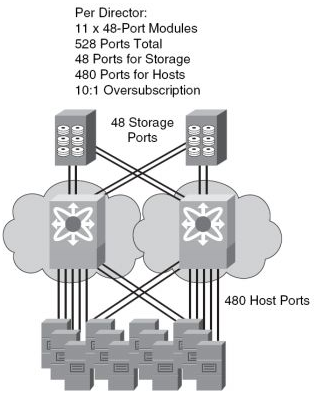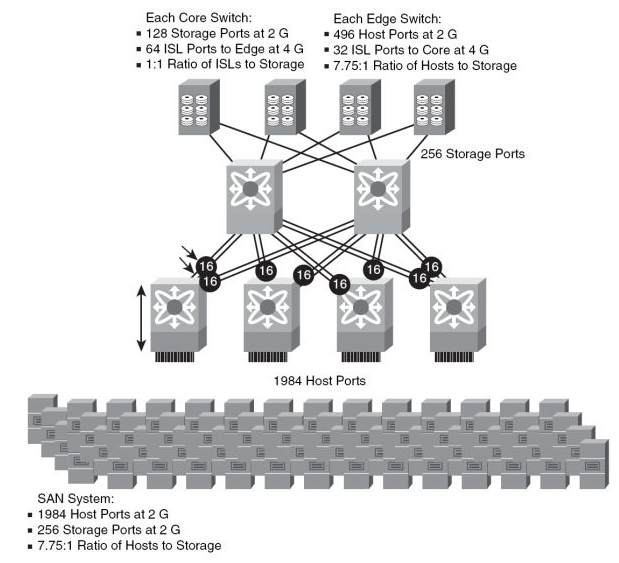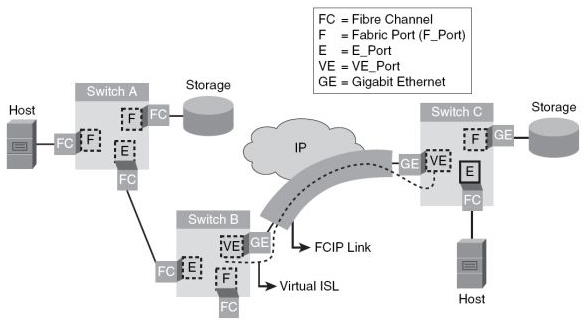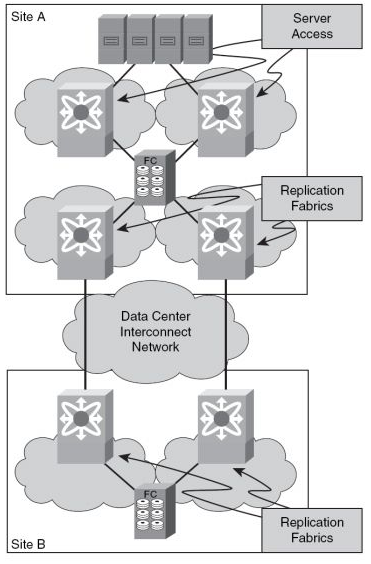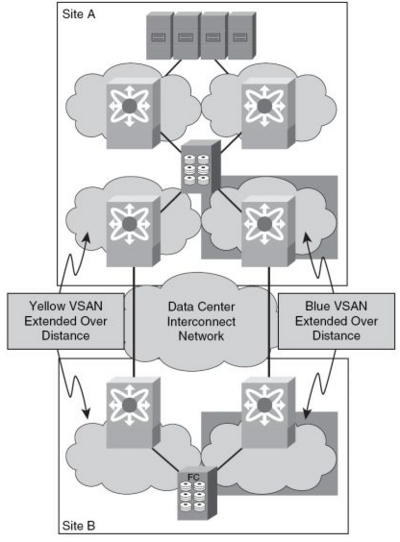Storage Area Network
Definition
1. A network whose primary purpose is the transfer of data between computer systems and storage elements and among storage elements.
A SAN consists of a communication infrastructure, which provides physical connections, and a management layer, which organizes the connections, storage elements, and computer systems so that data transfer is secure and robust. The term SAN is usually (but not necessarily) identified with block I/O services rather than file access services.
2. A storage system consisting of storage elements, storage devices, computer systems, and/or appliances, plus all control software, communicating over a network.
The SNIA definition specifically does not identify the term SAN with Fibre Channel technology. When the term SAN is used in connection with Fibre Channel technology, use of a qualified phrase such as "Fibre Channel SAN" is encouraged. According to this definition, an Ethernet-based network whose primary purpose is to provide access to storage elements would be considered a SAN. SANs are sometimes also used for system interconnection in clusters.
- definition source Storage Networking Industry Association (SNIA) definition
- SNIA's] full definition of a SAN
See also
Network Attached Storage (NAS)
Differences between a SAN and a NAS
- A NAS is defined by SNIA as
- systems that provide file services to host computers using file access protocols
- A SAN is is defined by SNIA as
- The term SAN is usually (but not necessarily) identified with block I/O services rather than file access services.
Conclusion
- A NAS can always be called a SAN
- A SAN can not necessarily be called a NAS unless it offers File Services via a network.
A NAS using a SAN backend
It is possible for a NAS to use a SAN backend as displayed in picture 2.
Additional reading
 IP Storage White Paper by SNIA
IP Storage White Paper by SNIA Storage Network Security by SNIA
Storage Network Security by SNIA Storage virtualization by SNIA
Storage virtualization by SNIA- SNIA education WEB. Lots of god stuff
- Cisco CCDP Storage Area Network
designing SAN and SAN extension
Port density and Topology Requirements
En vigtig parameter ved designet af et SAN er antallet af porte. For eksempel vil et SAN med 100 porte være meget anderledes end et SAN med 1.500 porte. Stil disse spørgsmål før SAN'et designes
- Hvor mange porte er nødvendige nu?
- Hvor mange porte vil være nødvendige i fremtiden?
- Hvad er den forventede levetid af SAN'et
Best practice
- Design netværket for fremtiden, men installer kun det antal porte der er nødvendige nu.
- Beregn en overkapacitet fra Storage enhederne mod serverne i foholdet 7:1 til 15:1 (Afhængig af platforme og applikationer)
Simplificeret SAN management
Single-Switch Collapsed Core Design
Small-Scale, Dual-Fabric Collapsed Core Design
File:San Small Scale Collapsed Core.png400px Small-Scale, Dual-Fabric Collapsed Core Design |
Medium and Large-Scale, Dual-Fabric Core-Egde Design
SAN extension
SAN Extensions refererer til at transportere Storage trafik over MAN eller WAN's. SAN Extensions kan fx. køre over ISCSI.
SAN Extension protocols
For eksempel FCIP - Fiber Channel Over IP.
Eller ISCSI
I forbindelse med SAN extension kan benyttes
- Tape Acceleration: Nedsæt Remote backup tid.
- FCIP Write Acceleration: Gør I/O transaktioner mellem Servere og Storage Devices.
- Hardware-assisted Data Compresion over FCIP: Komprimer data over WAN-links.
- Hardware-based IPsec: Datasikkerhed
